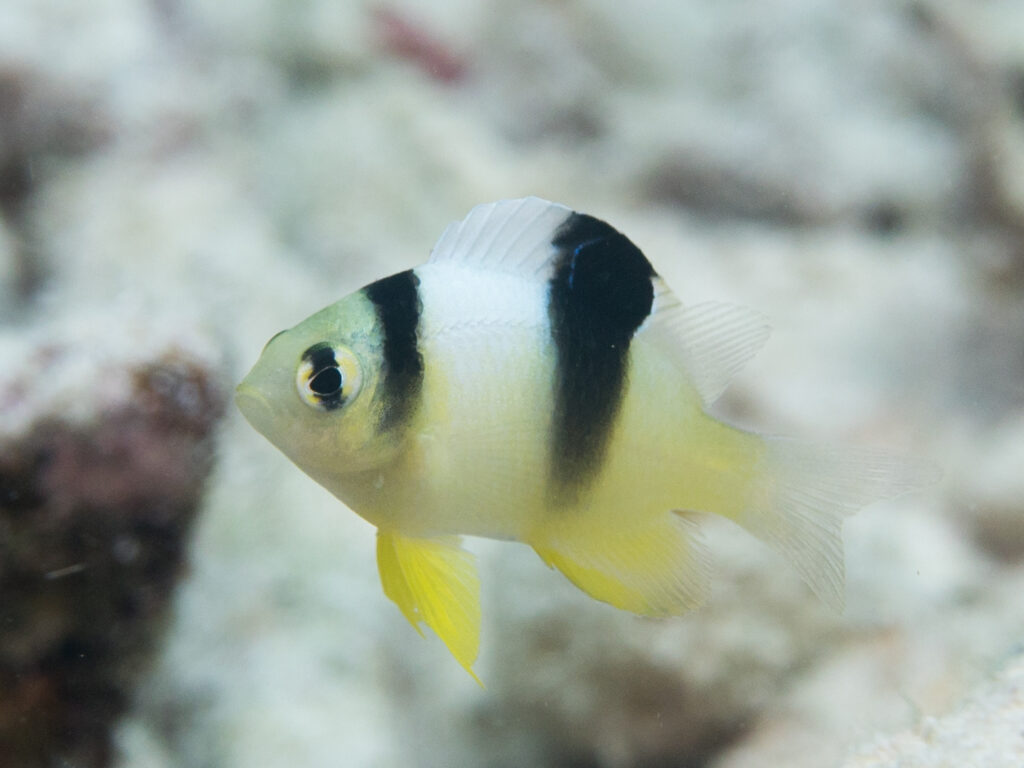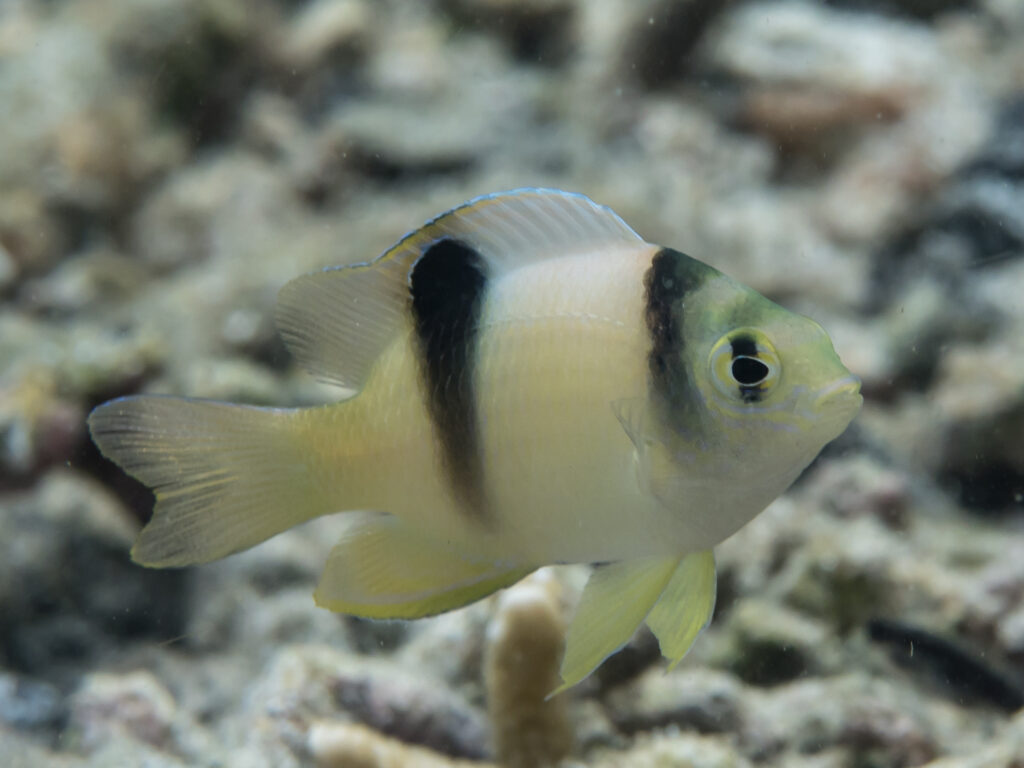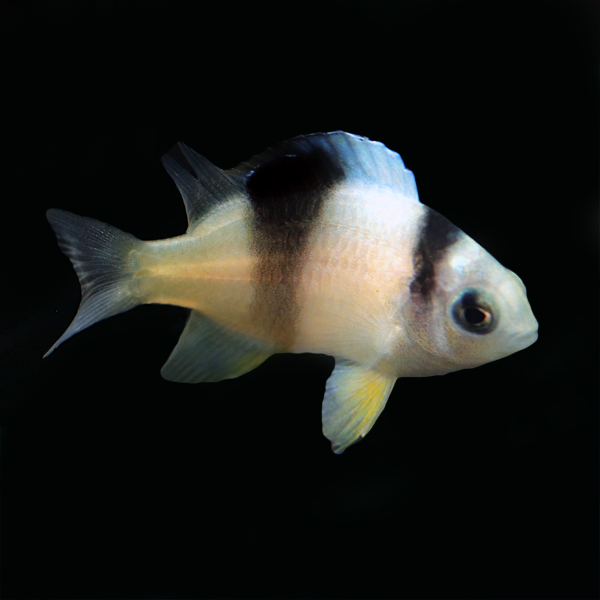
The Biota Group has had an eventful June in 2023, introducing a new hybrid fang blenny and announcing a long-overdue accomplishment with the first captive-bred Lawnmower Blennies. However, no one could have predicted this latest captive-breeding first, particularly since the White Damselfish, Dischistodus perspicillatus, isn’t even generally in the aquarium trade anyway! In fact, this is so unexpected that it’s more than just a species-first, but per our records, it is even a genus-level first for marine fish aquaculture and breeding success!

At a maximum adult size of 7 inches (18 cm), the captive-bred White Dameselfish may not be for every aquarium. There is little available information on this species in the aquarium hobby, although Quality Marine notes that the species is best suited for larger aquariums (75-gallons or more) and with suitably robust tankmates. Author Scott Michael writes in his Reef Fishes volume Damselfishes & Anemonefishes, that this is a fish “so aggressive that it will regularly attack divers.” It is also one of the herbivorous damselfishes that farms algae, so be sure to provide a suitable diet that includes a substantial amount of algae-based offerings.

Don’t expect captive-bred White Damselfishes to become a routine offering, but for large tanks with a mix of aggressive and predatory fishes, these may be just the ticket! Biota’s announcement is below.
– Matt Pedersen
via The Biota Group

Biota Palau is announcing another new cultured species! The White damselfish is very rare in the aquarium trade. This species is an exceptionally hardy saltwater fish and perfect for the damselfish collector or large aquariums with other aggressive species and plenty of territory for this boisterous fish.
See more at https://shop.thebiotagroup.com/products/white-damsel
###

